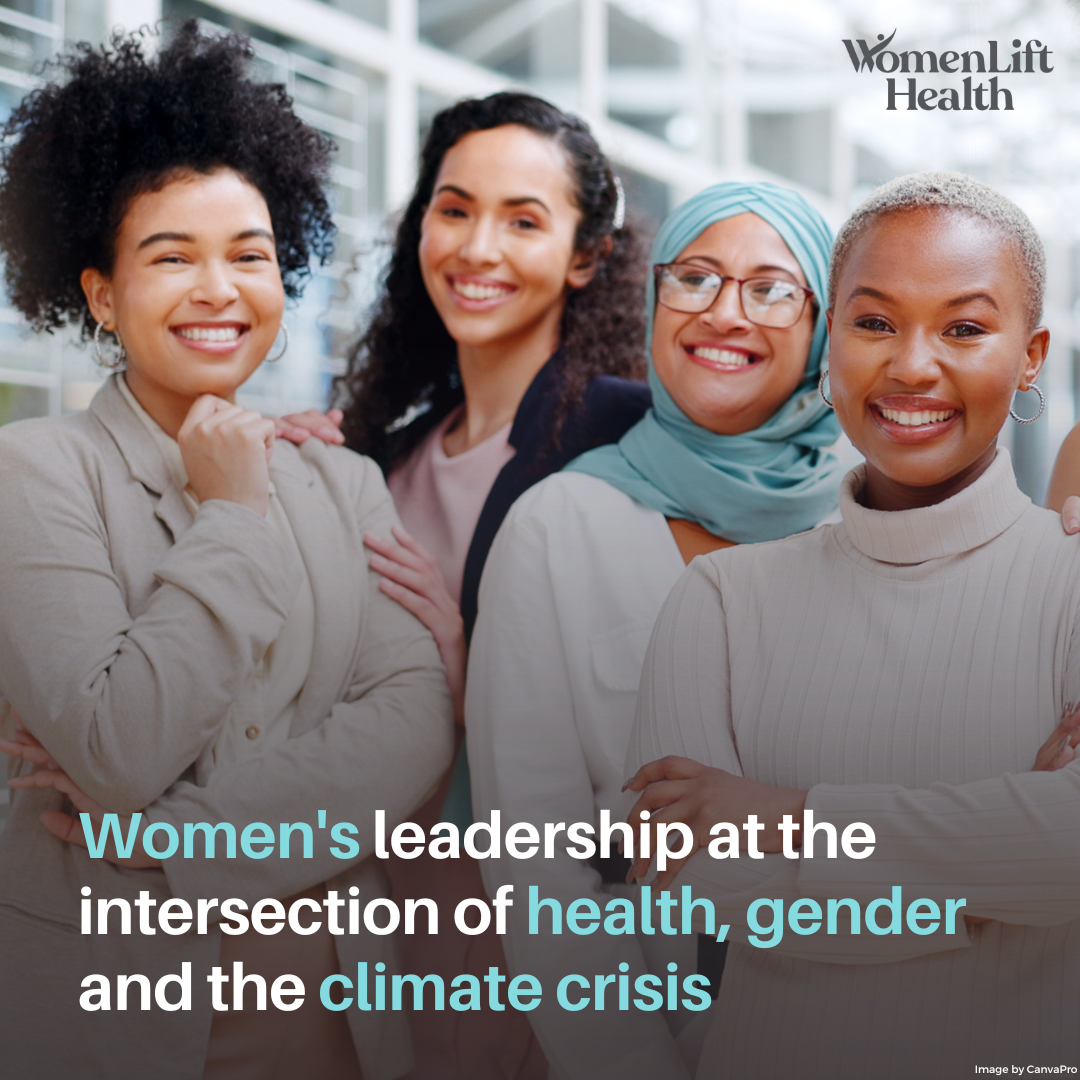As I reflect on the just concluded COP28, I can’t help but think about the human face of climate change–particularly the faces of women and girls. Why does my mind focus on women and girls? Because the impact of climate change is not gender neutral. The climate crisis disproportionately impacts those who have a primary responsibility for securing their family’s food and water, for those caring for children and elders and for those who are typically last in line to have their voices heard and their needs met – gender roles overwhelmingly deemed for women to fill. With women and girls on the frontline, the climate crisis is creating new threats to the health, livelihoods, and human rights of women, worsening existing gender vulnerabilities.
The climate crisis, gender and health are inextricably linked; climate change endangers the health of women and girls around the world by limiting access to services and health care, as well as increasing risks related to maternal and child health. The health consequences of climate change are far reaching, with research indicating that extreme heat increases incidences of stillbirth, and vector-borne illnesses such as malaria, dengue fever, and Zika virus, which are linked to worse maternal and neonatal outcomes, are on the rise.
Compounding emerging health concerns, climate change is reversing progress in women’s access to health services. A UNFPA 2021 Report illustrates this concerning pattern; more than 20,000 women of reproductive age in Mozambique risked unwanted pregnancy when they went without access to contraception in the wake of Cyclone Eloise. Another estimated 180,000 women of reproductive age were unable to access family planning in the aftermath of Hurricanes Eta and Iota in Honduras in 2020.
Climate change is having unexpected effects on women’s health. Fisherwomen in coastal Bangladesh stand for hours in waist deep water in river deltas, netting fish just as their grandmothers did before them. However, rising seas levels, floods and other climatic changes are increasing the salinity of the water, killing the fish, polluting drinking water and creating new reproductive health issues for the women that fish there.
The need to address the intertwined challenges of health, gender and climate change has never been clearer. While it is commendable that, for the first time in its history, COP28 dedicated a full day to health, the conversation failed to address the gendered impact of the climate crisis. Why? Environmental health is following the same trend we’ve seen in health for over a decade – although women are at the front lines of healthcare, at the heart of climate activism, and disproportionately impacted by the climate crisis, they are not adequately represented at the decision-making tables.
Only 15 out of the 133 world leaders participating in COP28 were women, a marginal improvement from COP27 which had only 7 women out of the 110 world leaders. This gender imbalance was evident at all levels, with party delegations composed of 2/3 men and only 1/3 women. An Advocacy brief released by the WHO Partnership for Maternal Newborn and Child Health (PMNCH) reiterates the need to include women leaders in high level decision-making on climate adaptation and mitigation solutions. Women bring essential expertise, leadership skills and lived experience to understand, design and implement solutions that address the needs of vulnerable populations. As highlighted by UN Women in its report Effective, decisive and inclusive: Women’s Leadership in COVID-19 response and recovery, women leaders prioritized effective leadership, inclusive policies and rapid responses in addressing not only health, but the broader impacts of the pandemic.
Bridging the Gap
Empowering women leaders, not just as politicians but also as scientists, policy makers, investors, and entrepreneurs, will increase the likelihood of creating and implementing the climate solutions the world desperately needs. Already, women, especially Indigenous women and women in the global south, are leading frontline climate action and activism to implement local solutions for adaptation and resilience.
During our WomenLift Health Global Conference, April 6-8, 2024, the role of women’s leadership in addressing the intersection of health, gender and climate change will take center stage. This global convening provides a desperately needed platform for women leaders and men allies across health organizations to connect, listen and share. Ultimately, the conference aims to inspire women and men – as individuals, institutional leaders and societal champions – to take action to advance women leaders.
More women leaders need to be positioned to sit at the decision-making table. WomenLift Health’s goal is to invest in women leaders so that they have the tools, support and connections to pull up bigger chairs to bigger tables to address the biggest health challenges of our time. Once at the table, women leaders will prioritize initiatives to identify and address the gendered impact of climate change on health. Tackling interdisciplinary challenges spanning nutrition, agriculture, and food security, air pollution and respiratory diseases, water and sanitation, evolving infectious diseases trends, and the health consequences of increasing displaced populations. These unprecedented challenges require diverse and transformative leaders – both women and men.
At meeting after meeting, I have heard that more women should be at the table. In the face of the climate crisis, it has never been more important to turn these statements into concrete action. We, in the global community, must prioritize investing in women leaders – our future depends on it.


